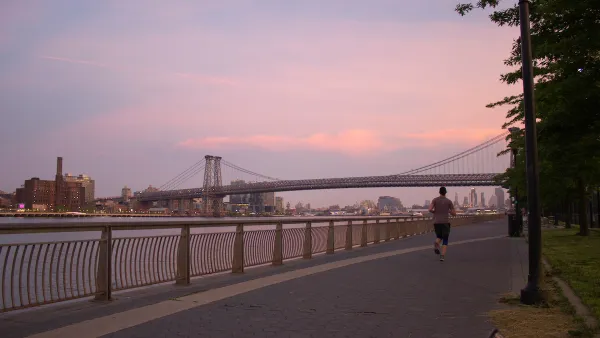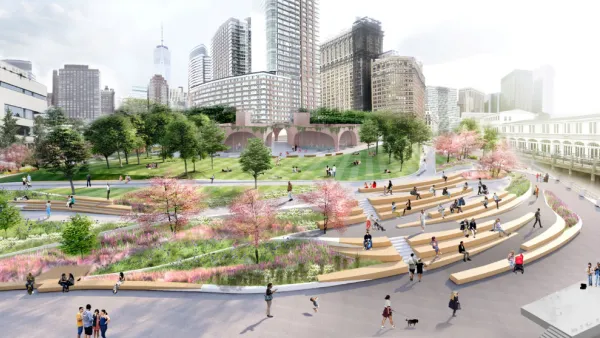The lack of a single strategy for how to protect the areas devastated by Hurricane Sandy from future storms leaves residents to choose between two unappealing options: rebuild in place and risk future disaster or abandon their neighborhoods.
Recent articles in Bloomberg and The Wall Street Journal reveal how two divergent post-Sandy rebuilding strategies - New York State's plan to compensate residents to retreat and the City of New York's steadfast support for rebuilding in place - are resulting in an uncoordinated, and often maddening, range of responses to the threat of future storms.
On Staten Island, James S. Russell finds confusion and anger about the options for rebuilding being considered. "Many Sandy victims want to rebuild what they had where they were," says Russell. "But if data still being collected show that houses cannot be raised high enough or that neighborhoods can’t be realistically protected, then it would be folly to allow or help people to rebuild."
"To me one thing was clear," he adds. "Planning for the future must begin now -- not after the city collects data. Too many people are stuck in rebuilding limbo, and many will lose otherwise recoverable assets if they can’t make decisions quickly, with greater certainty."
Meanwhile, in the Breezy Point section of Queens, Laura Kusisto finds a community committed to rebuilding in place, a strategy supported by the mayor and $350 million in federal funding. "'We think that virtually 99% of the people who live at the water's edge will want to continue to do that,' said Mayor Michael Bloomberg, at a recent news conference."
"Some, however, question the mayor's strategy, given the towering cost to future governments if natural disasters become more frequent as many scientists predict," notes Kusisto. "'If you approach it from a rational approach it's insane," said Klaus Jacob, a Columbia University professor who specializes in disaster risk management. 'We are setting ourselves up for ever more disasters.'"
FULL STORY: Sandy Victims’ Fear, Anger Delay Key Planning Decisions

Analysis: Cybertruck Fatality Rate Far Exceeds That of Ford Pinto
The Tesla Cybertruck was recalled seven times last year.

National Parks Layoffs Will Cause Communities to Lose Billions
Thousands of essential park workers were laid off this week, just before the busy spring break season.

Retro-silient?: America’s First “Eco-burb,” The Woodlands Turns 50
A master-planned community north of Houston offers lessons on green infrastructure and resilient design, but falls short of its founder’s lofty affordability and walkability goals.

Test News Post 1
This is a summary

Analysis: Cybertruck Fatality Rate Far Exceeds That of Ford Pinto
The Tesla Cybertruck was recalled seven times last year.

Test News Headline 46
Test for the image on the front page.
Urban Design for Planners 1: Software Tools
This six-course series explores essential urban design concepts using open source software and equips planners with the tools they need to participate fully in the urban design process.
Planning for Universal Design
Learn the tools for implementing Universal Design in planning regulations.
EMC Planning Group, Inc.
Planetizen
Planetizen
Mpact (formerly Rail~Volution)
Great Falls Development Authority, Inc.
HUDs Office of Policy Development and Research
NYU Wagner Graduate School of Public Service



























